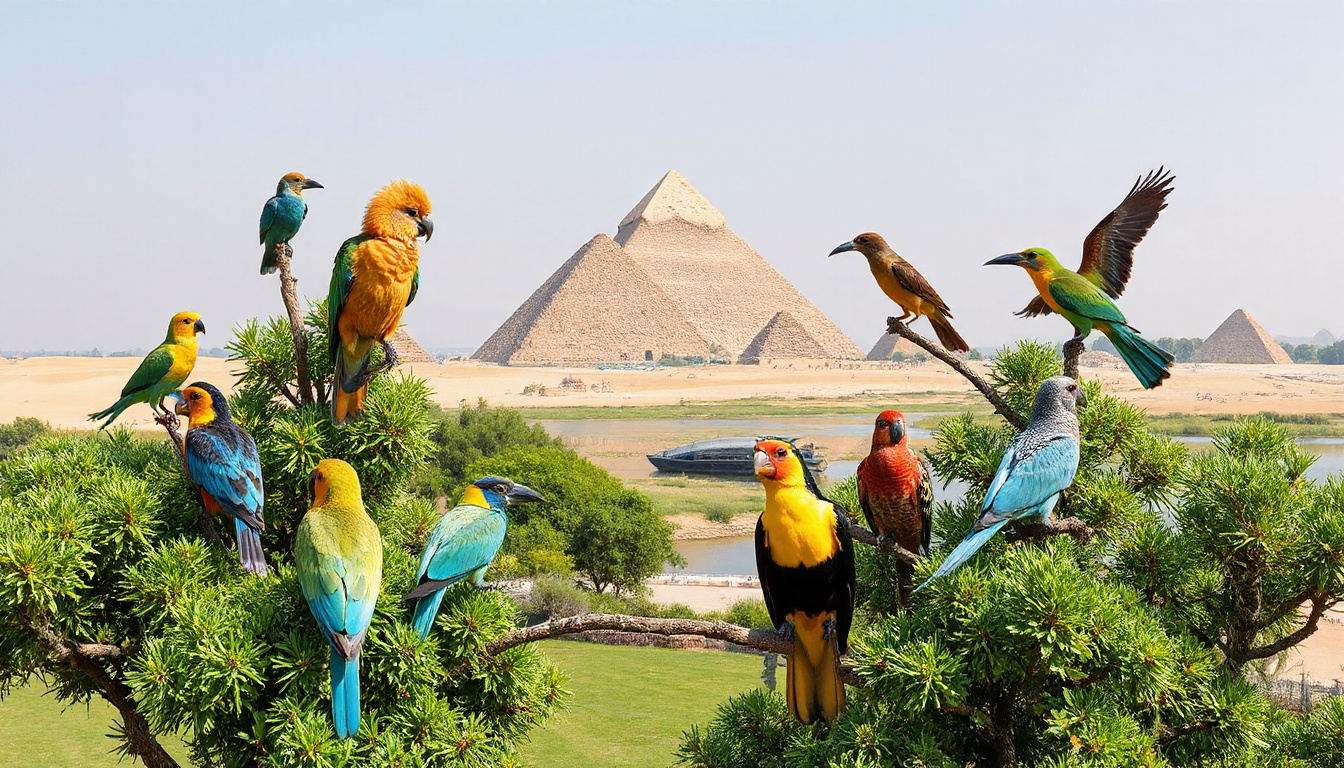Bird watching in Egypt offers a unique opportunity to explore the country’s diverse ecosystems and observe a spectacular array of avian species.
From the soaring cliffs of the Red Sea to the lush wetlands of the Nile Delta, Egypt serves as a pivotal habitat for many migratory and resident birds.
In this comprehensive guide, we will delve into the best birding locations, essential gear you’ll need, optimal times for bird watching, and tips to enhance your experience.
Whether you’re an avid ornithologist or a curious traveler, discover the enchanting world of birds in Egypt and how to enjoy this incredible activity.


Essential Gear for Bird Watching
### Essential Gear for Bird Watching in Egypt
When embarking on a bird watching in Egypt adventure, equipping yourself with the right gear can significantly enhance your experience.
Whether you’re an amateur enthusiast or a seasoned birder, the following essentials will help you navigate the diverse Egyptian landscapes and spot an array of stunning avian species.
#### Binoculars
A high-quality pair of binoculars is a crucial item for any bird watchers in Egypt.
Look for binoculars with at least an 8x magnification to help you observe distant birds up close.
Waterproof and fog-proof models are ideal for this desert environment, where sudden weather changes can occur in coastal areas.
#### Field Guide
Having a reliable field guide or bird identification app tailored for the region is another vital tool for bird watching in Egypt.
Guides often include colorful illustrations, descriptions, and habitat information that can assist you in identifying your finds, from the majestic Nile Valley Sunbird to the rare and migratory white-cheeked tern.
#### Camera Gear
For photography enthusiasts, a camera with a good zoom lens is invaluable.
Capturing images of birds in their natural habitat not only helps document your experience but also allows you to share the beauty of Egypt’s avifauna with others.
Consider a lightweight tripod to stabilize your camera, especially for long-distance shots.
#### Notebook and Pen
Documenting your bird watching experiences in Egypt can enhance your understanding of bird behavior and contribute to your growing knowledge.
A simple notebook can be perfect for jotting down notes about species seen, behaviors observed, and even sketches of the birds.
#### Comfortable Clothing and Footwear
Since bird watching often requires a fair amount of walking or standing, wearing comfortable, breathable clothing is key.
Opt for colors that blend into nature, avoiding bright hues that may scare away birds.
Sturdy sandals or hiking shoes will provide the comfort and support necessary for navigating rugged terrains, especially in areas like the Great Sand Sea or the coastal wetlands of the Nile Delta.
#### Water and Snacks
Egypt’s climate can be hot and dry, making hydration essential while bird watching.
Carrying a refillable water bottle will ensure you stay hydrated, while some energy-boosting snacks will keep your energy up during extended excursions into nature.
#### Insect Repellent and Sunscreen
Given the natural habitats you may explore, insect repellent is particularly important, especially in marshy areas where mosquitoes are prevalent.
Likewise, using sunscreen will protect against harsh sunlight, helping you enjoy longer hours outdoors without discomfort.
Preparing with the right gear can make your bird watching in Egypt not only enjoyable but also successful.
By ensuring you have the necessary tools, you can immerse yourself in this mesmerizing journey through one of the most diverse avian regions in the world.
Best Times of the Year for Bird Watching
## Best Times of the Year for Bird Watching in Egypt
Bird watching in Egypt is a thrilling experience that attracts nature enthusiasts and wildlife photographers alike.
The country boasts a unique geographical position that serves as a vital stopover point for migratory birds traveling between Europe and Africa.
To make the most of this avian adventure, it’s essential to know when to visit.
The ideal months for bird watching in Egypt generally fall between October and March.
During these months, a myriad of migratory species can be observed, including the stunning greater flamingos, herons, and various songbirds.
Each winter, thousands of egrets, gulls, and warblers flock to Egypt’s wetlands, making it a paradise for birdwatchers.
Particularly, the months of November to January are prime for spotting migrating birds, as the weather is mild and pleasant.
Locations such as Lake Qarun in the Fayoum region and the wetlands of the Nile Delta become hotspots for bird activity.
Additionally, spring (March to April) also offers rewarding bird watching opportunities, particularly for species that are starting their return north.
Visitors can witness breeding plumage as birds prepare for their journey back.
While the summer months can be hot and less comfortable for extended observation, certain species remain hidden away, making fall and spring the best times to indulge in this exhilarating hobby.
For those looking to capture stunning photographs while enjoying the experience, it’s advisable to plan your outings early in the morning or late in the afternoon when birds are most active.
Before heading out, check local weather conditions and nesting seasons to ensure you’re not just a spectator, but an informed participant in the beautiful tapestry of Egypt’s avian life.
 November 2025
November 2025

